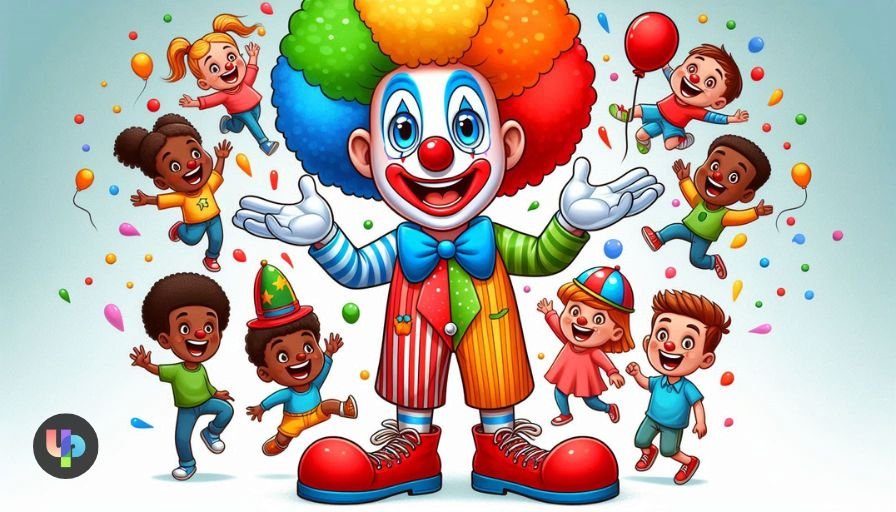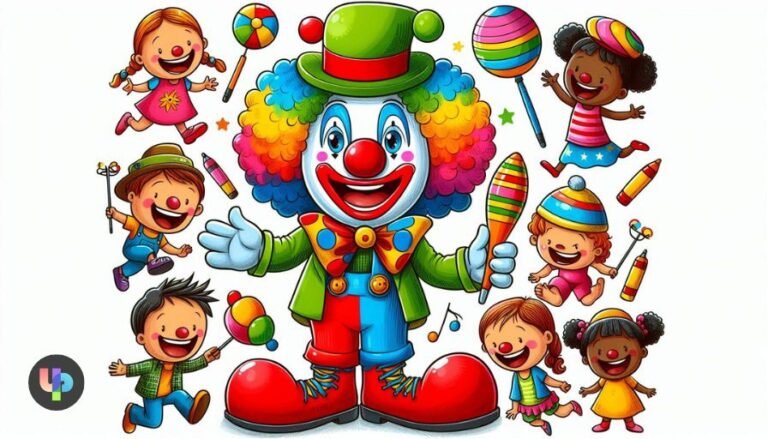Clowns have long intrigued artists, offering a blend of whimsy, joy, and a touch of eeriness, making them an appealing subject for creatives at any skill level. The keyword ‘DrawingTj4pulrjsnq= Clown’ highlights the artistic process and techniques used in crafting clown illustrations, whether you’re drawing for fun, practice, or a more serious artistic project. This article offers a comprehensive guide to drawing clowns, from initial sketches to the fine details that bring your artwork to life.
Why Draw Clowns?
Drawing clowns can be an exciting artistic challenge. Their exaggerated features, colorful costumes, and expressive faces provide endless opportunities to experiment with different drawing techniques and styles. Whether you’re aiming to create a cheerful circus clown or a more sinister, horror-inspired character, clowns offer a unique canvas for your creativity.
Getting Started with DrawingTj4pulrjsnq= Clown
Before diving into the drawing process, it’s essential to gather your materials and set up your workspace. This will help you stay focused and allow you to experiment freely.
Essential Drawing Materials
To get started with your clown drawing, you’ll need:
- Pencils: A range of pencils from HB to 6B will help you achieve different shades and depths in your drawing.
- Eraser: A good quality eraser is essential for correcting mistakes and refining your work.
- Paper: Choose a smooth, sturdy paper that can handle multiple layers of pencil or ink.
- Colored Pencils/Markers: If you plan to add color to your clown, have a set of vibrant colored pencils or markers on hand.
Step-by-Step Guide to Drawing a Clown

Now that you have your materials ready, let’s walk through the steps of creating your clown drawing.
Step 1: Sketching the Basic Shape
Begin by lightly sketching the basic shapes that will form your clown. Start with a circle for the head and ovals for the body and limbs. This rough outline will serve as a guide for placing the clown’s features and ensuring proper proportions.
- Head: Draw a circle for the head. This will be the foundation for the clown’s facial features.
- Body and Limbs: Sketch an oval for the body and use elongated ovals or rectangles for the arms and legs. Clowns often have exaggerated proportions, so don’t be afraid to play with the sizes.
Step 2: Adding Facial Features
The face is one of the most important aspects of a clown drawing. It’s where you can express the clown’s personality, whether it’s happy, sad, or mischievous.
- Eyes: Draw large, expressive eyes. Clown eyes are often exaggerated with long eyelashes or heavy makeup.
- Nose: The clown’s nose is typically a round, bulbous shape. Make it prominent and centered on the face.
- Mouth: The mouth should be wide and expressive. Whether it’s a big grin or a dramatic frown, the mouth will help convey the clown’s mood.
- Makeup: Add traditional clown makeup patterns, such as exaggerated eyebrows, cheek circles, and lines extending from the mouth.
Step 3: Detailing the Costume
A clown’s costume is full of vibrant colors and playful patterns. This is where you can really get creative with your design.
- Hat: Many clowns wear hats, which can range from tiny top hats to oversized floppy ones. Add a hat that suits your clown’s personality.
- Hair: Clowns often have wild, colorful hair. You can draw curly, spiky, or fluffy hair, depending on the look you’re going for.
- Clothing: Clown outfits are typically exaggerated, with large collars, baggy pants, and oversized shoes. Add details like stripes, polka dots, or patches to make the costume more interesting.
Step 4: Shading and Coloring
Once your basic drawing is complete, it’s time to add shading and color to bring your clown to life.
- Shading: Use your pencils to add depth and dimension to your drawing. Focus on areas like the eyes, nose, and folds in the clothing to create shadows and highlights.
- Coloring: Use bright, bold colors to fill in your clown’s costume and makeup. Clowns are known for their vibrant appearance, so don’t be afraid to use a wide range of colors.
Tips for Creating Unique Clown Drawings
Here are some additional tips to help you make your clown drawing stand out:
- Experiment with Styles: Clowns can be drawn in a variety of styles, from realistic to cartoonish. Experiment with different styles to find what suits your vision.
- Focus on Expression: A clown’s expression is key to its character. Spend extra time refining the facial features to ensure they convey the right emotion.
- Use Reference Images: If you’re struggling with certain elements, don’t hesitate to use reference images. They can provide inspiration and help you capture the details accurately.
Conclusion
DrawingTj4pulrjsnq= Clown offers a delightful opportunity to explore a range of artistic techniques. Whether you’re creating a cheerful clown for a children’s illustration or a darker, more complex character, the process is both challenging and rewarding. By following this guide, you can develop your skills and create a clown drawing that truly captures the essence of these iconic performers.
